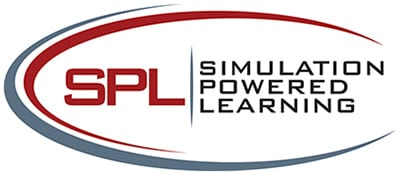From an early age to pre-adulthood children spend a large portion of their time in school, but they spend almost all of their time learning. Their exposure to new ideas and the time spent developing new skills is greatest during these early years. Academic progress is measured with grades and scores, but how do we assess the progress made in other areas? If we are going to help instill the values of Agile Parenting in our children, and therefore develop future Agile Parents, we need a way to assess their progress.
Similarly, project teams have a higher learning curve during the initial stages of a project as they become familiar with the purpose and deliverables. Beyond the technical and business learning necessary for the project’s success, teams also have to learn the structure of the project and how to work with their teammates within that structure. This period of rapid learning is usually referred to as the “forming and storming” stage.
In both situations, projects and parenting, it is easy to lose sight of the fact that all teams suffer through these stages. Unwilling to accept this state of imperfection-or simply too impatient-we create schedules that are too aggressive, applying productivity levels not yet achieved, leading to projects that are late before they are even defined. The resultant slippage puts external pressure and emphasis on immediate results and dismisses spending any time developing the people, which is exactly what is necessary to get the team performing at a higher level.
It is important to recognize the team is not always where you want them to be. Constant evaluation of where they are is essential to taking corrective action and/or providing support. The same is true as parents: we too often fail to understand the world through the eyes of our children. Consequently, we attribute to them levels of understanding and capabilities they may not have yet. The result is almost always unmet expectations.
The only way to know where the team or our children are on this development spectrum is to let them practice their proficiency, observe objectively, and determine their progress. The challenge is letting them practice; we lose control of the outcome and we feel less able to influence the result. This is a risky proposition when the consequences are potentially severe. This risk pushes us into uncomfortable territory, as we fear the outcomes will not meet our expectations without more direct intervention.
But it wouldn’t be fair to assume the practice will always fall short of our expectations. Given the chance to practice, people will often learn and progress far faster than we can accept the changes and make the necessary adjustments to our approach.
I like to remind myself that many of the things I do as a parent and a project manager are new to me too, at least situationally. I may know what to do, but in practice my actual performance may be something entirely different. If I expect to be allowed to learn through practice, I have to afford that same privilege to others. As my daughters matured, they presented us with new situations in which to parent. Like them, we are continually learning too. I try to recognize that for all of us practice is an investment in learning, and without learning there is no progress.
We often forget that there is not a direct or immediate correlation between knowing how to do something and actually doing it. There are many things we know how to do, but doing them with regular discipline is another thing entirely. Sport offers a good analogy for the difference between knowing and doing: while the theory and mechanics of a sport can be studied and known, when it comes to performance, there is no substitute for practice. Ask any good athlete how much they practice and you will understand just how important it is.
While knowing may be a prerequisite for doing, few results will come from the knowing alone. Therefore:
As Agile Parents, we have come to value:
Practice and Progress over preaching perfection.
Practice will show progress, while preaching perfection only reiterates the known or asserts an external parochial perspective. Preaching tells us how it should be done, while practice allows us to explore how we can do it ourselves. Practice encourages the assertion of the individual by allowing personal proficiency to unfold.
If we are looking to develop great teams or the Agile Parents of tomorrow, we have to make time for deliberate practice. It is the only way to make progress. Just talking about it is not enough. Practice will develop and demonstrate progress; because just like children, teams progress one day at a time. Projects are completed one task at a time. Recognizing this, to get the most from our practice, we follow these principles:
We believe a safe and supportive environment
is essential for practice that develops proficiency.
Action that is evidenced or experienced will always
be understood more than ideas and words.
The visible results of practice are the primary measure of progress.
Last week I had a project team member come to me with some information about an issue on our project. She dumped it in my lap like it was yesterday’s leftovers, as if to say, “do something with this.” I thanked her for bringing it to my attention and then asked her what she planned to do about it. She looked at me as if I had stolen her question. We talked it over for a bit and then I reassured her that she was capable of handling this issue, and was in fact the person who understood it the best. Therefore she was the ideal person to deal with it.
After some discussion, she came up with some ideas she wanted to try (practice) and we set a check point later in the week to measure her progress. What she needed from me was support and guidance for her practice, not an answer. What we both got was a stronger team member.
To take some liberties with an old axiom, “Practice may not make perfect, but it almost always makes progress.”

